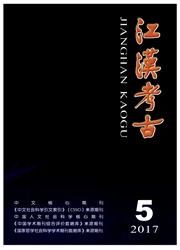

 中文摘要:
中文摘要:
本文利用浮选法获取了杨堡遗址的大汶口文化晚期、龙山文化、岳石文化和战国晚期--汉代的炭化植物遗存,量化分析结果表明,在大汶口文化晚期,农作物以水稻为主,粟、黍所占比重较小;岳石文化时期,粟的比重上升,与水稻的地位相当,同时小麦和大豆出现,且小麦初具规模,黍的比重较小;到了战国晚期--汉代,粟和小麦成为主要作物,水稻的地位明显下降。上述研究结果显示,以杨堡遗址为代表的淮河中游地区最晚在新石器时代晚期就开始实行多种作物的种植制度,并不断发展;稻-旱混作农业模式在这里长期延续并经历了此消彼长的演变过程。研究结果对揭示淮河中游地区古代人类生业模式及农业结构演变有重要价值。
 英文摘要:
英文摘要:
The flotation result of plant remains in Yangpu Site, excavated at Suzhou City, Anhui in 2012, shows the development of the agriculture from the late Neolithic Time to Han Dynasty. In the time of late Dawenkou Culture, rice farming was dominant in the site; in the time of Yueshi Culture, millet farming equaled to rice farming, and wheat and soybean planting appeared at the meantime; in the time from late Warring States to Han Dynasty, millet and wheat became the main crops, while the rice planting declined. The result indicates that at least in late Neolithic time, multi-planting was taken place in the middle reaches of Huai River, dry farming and rice farming coexisted in different times of the site.The study is of great importance in revealing the livelihood and agricultural structure of ancient people in the area.
 同期刊论文项目
同期刊论文项目
 同项目期刊论文
同项目期刊论文
 期刊信息
期刊信息
